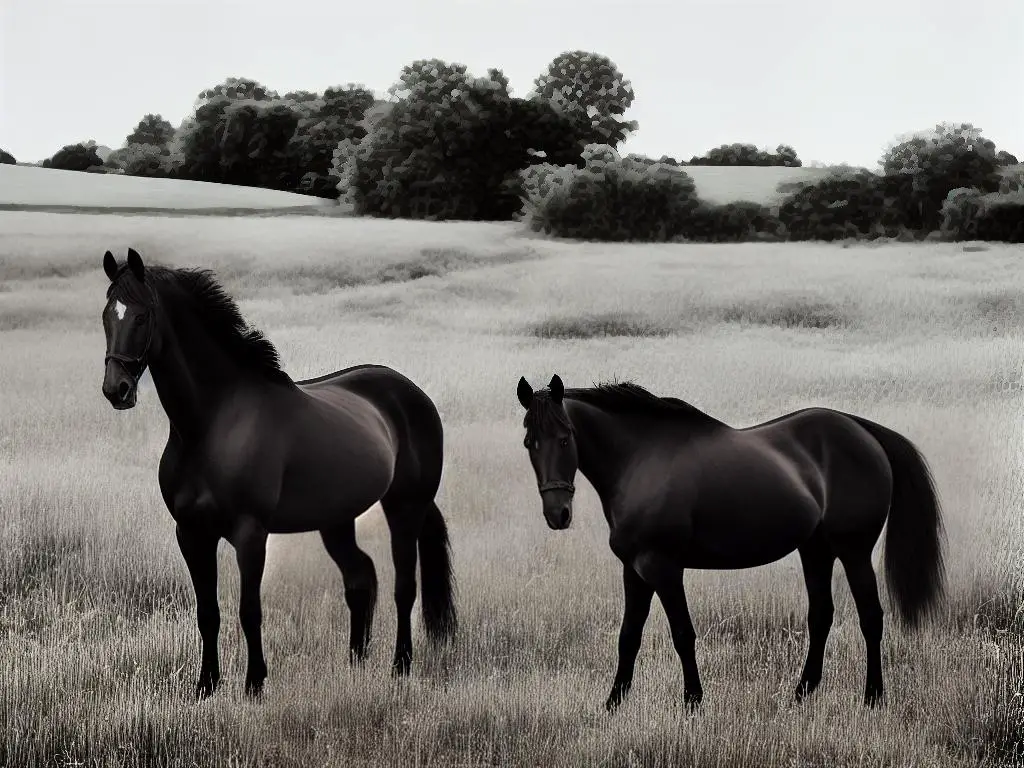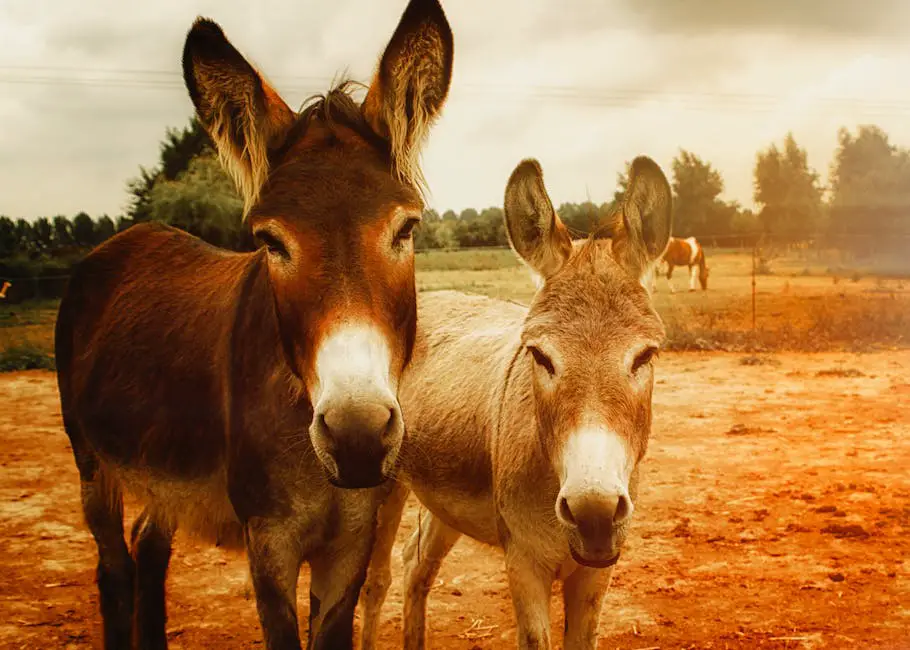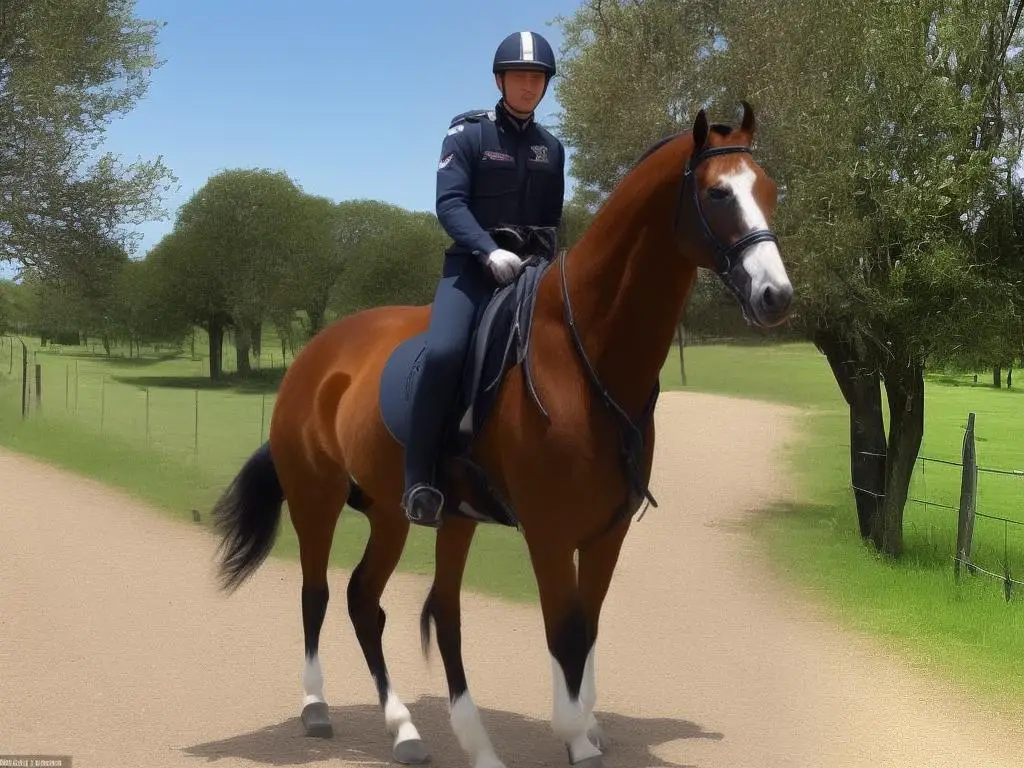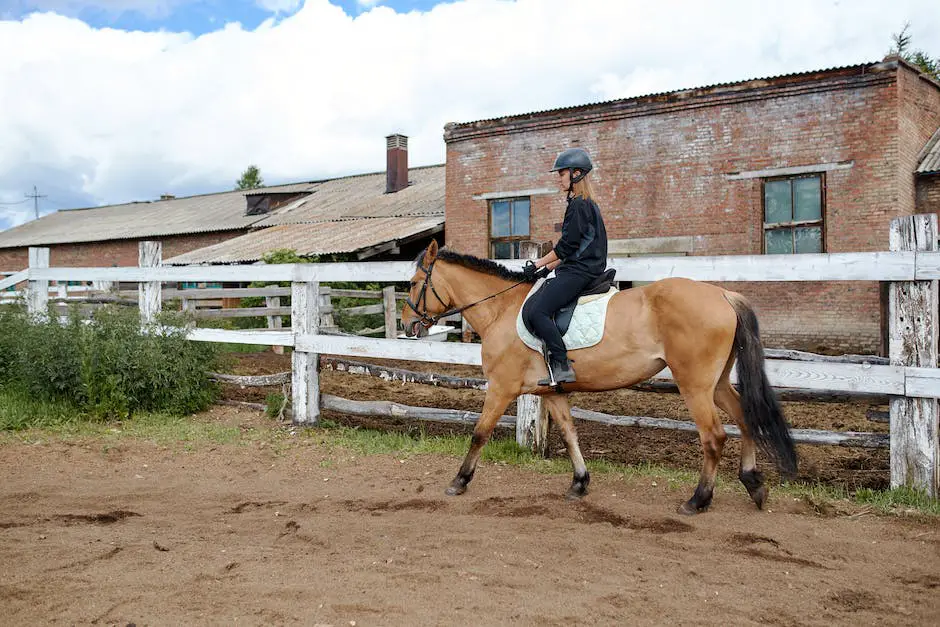Famed for its strength, hardiness and vibrant historical legacy, the Ardennais horse holds a unique place in the realm of horse breeds. Originating from the hilly regions of Ardennes in Europe, this breed has witnessed the tides of time and has been pivotal in diverse fields, from farming, forestry, and meat production to recreation and competitive sport. Through a deeper examination of the Ardennais horse’s history, distinctive characteristics, multifaceted roles, and required care, along with its depiction in popular culture, we can truly appreciate the ardor, resilience and versatility of this magnificent breed.
Table of Contents (Horspedia)
Origins and History of the Ardennais Horse
Origins and Early History of the Ardennais Horse
The Ardennais horse, also known as the Ardennes, has a rich and storied history that traces its origins all the way back to ancient times. Known to have existed as far back as ancient Rome, the Ardennais is believed to descend from the prehistoric Solutre horse. Over the centuries, various breeds have contributed to the shaping of the Ardennais, including heavy draft horses from Oriental regions.
Evolution of the Ardennais Breed
Through selective breeding and occasional cross-breeding, the Ardennais horse’s traits have evolved over the centuries. The horse became larger and more muscular, noted for its strength and weight-bearing capacity, which made it an excellent draft horse. Belgian horse breeders introduced blood from the Belgian Draft Horse into the Ardennais breed during the 19th century, further enhancing this robustness.
In France, around the time of the First Empire, the Ardennais was crossed with the Persian and Arabian horse, adding firmness and compactness to the breed. The addition of Swedish and Russian draft blood during the 19th and 20th centuries, respectively, also influenced the breed’s conformation.
The Ardennais Horse in Historical Events
The Ardennais horse has played significant roles throughout history. As previously mentioned, it was integral to Julius Caesar’s campaigns in Belgium. In subsequent centuries, the Ardennais continued to be a crucial element in war efforts due to its endurance and strength. The breed was extensively used in World War I and II to pull heavy artillery, a role for which its power and sturdiness were critical.
Additionally, on a more peaceful note, the Ardennais horse has been crucial to the development of agriculture and transportation throughout the ages. As a draft horse, it’s been utilized widely for pulling heavy loads, plowing fields, and other various farming tasks.
The Modern Role of the Ardennais Horse
In contemporary times, the Ardennais horse is not as prominently found in traditional farming due to the dominance of modern machinery. Nonetheless, this breed is still highly regarded for its impressive strength and endurance. It consistently carves a niche in forestry work, particularly in terrains where the use of machinery is either impractical or poses an environmental concern. The Ardennais horse, as a symbol of the regions from which it hails, remains a living reflection of a rich shared heritage between humans and equines.

Characteristics and Temperament of the Ardennais Horse
Recognizing the Characteristics of an Ardennais Horse
Rooted in the Ardennes region straddling Belgium, Luxembourg, and France, the Ardennais horse is among the oldest and most revered draft breeds.
Standing tall at an average of 15 to 16 hands, or roughly 60 to 64 inches, the height of an Ardennais horse is imposing. There’s a distinguishing sexual dimorphism in this species, with females trending towards the low end of this spectrum and males leaning towards the higher end.
If you were to weigh an Ardennais horse, you’d notice its substantial heaviness, usually anywhere between 1,800 and 2,200 pounds. Males of this species are known to push the upper limits of this weight range, bolstered by their solid bone structure.
The spectrum of coat colors on an Ardennais horse is definitely diverse, extending from bay and roan as the most widely seen, to chestnut, gray, palomino, and even the rarer strawberry roan. Their thick, sturdy and coarser-haired coats, regardless of color, are ideal for resisting extreme weather. A distinctive feature is their lower legs donned in “feathers,” a fluffy characteristic commonly exemplified in draft horses.
Distinctive Traits of Ardennais Horses
Where physical characteristics and distinctive traits intersect, the Ardennais horse portrays a picture of rugged strength and hardiness. Possessing a muscular and dense build, these horses display a wide chest and a massive neck reinforced by a muscular and power-packed body.
One cannot talk about the Ardennais horse without highlighting their adaptability. Famous for their ability to thrive in various conditions, these horses have been used for arduous tasks including farming, hauling, and even in warfare. They are resilient creatures with remarkable endurance capacities and a high level of hardiness.
Temperament and Behavioral Aspects of the Ardennais Horse
Despite their impressive size and strength, the Ardennais breed is generally known for their easy-going and calm temperament. They are often described as “gentle giants” due to their placid nature combined with their formidable physical attributes.
Their gentle disposition belies a strong work ethic and enduring patience. Ardennais horses are not easily spooked, a trait that makes them suitable for various roles, including work in farming and logging. They exhibit docility, are good-natured, and are notably willing to please, making them a great fit for experienced equestrian enthusiasts and novice riders alike.
Throughout history and in much of modern use, the Ardennais breed’s behavioral characteristics combined with their physical strength, make them versatile and exceptional draft horses suitable for various heavy-duty tasks.
Introducing The Ardennais Horse
Imagine a creature with an ideal equilibrium of strength and tranquility. This is the Ardennais horse, a breed that exudes sturdiness, reliability, and muscular strength, all coupled with a gentle and placid temperament. Truly representing the quintessence of draft horse breeds, the Ardennais is a sublime blend of power and composure, effortlessly distinguishing itself from the rest.

Uses and Roles of the Ardennais Horse
Exploring the Heritage of the Ardennais Horse
Tracing its roots back to the Ardennes region spanning Belgium, Luxembourg, and France, the Ardennais or Ardennes, is one of the ancient breeds of draft horses. These horses hold a rich history, driven by the evidence of their roots stretching back to the times of Ancient Rome. Their robust strength and impressive endurance earned them acclaim and demand, particularly during the two World Wars.
Uses in Agriculture and Forestry
The Ardennais is a sturdy draft horse breed, which makes it ideally suited for work in agriculture and forestry sectors. Their size, strength, and endurance allow them to efficiently plow fields, pull heavy loads, and perform various other physical tasks on the farm. Similarly, in forestry, the Ardennais is used to transport large amounts of timber. Even in today’s technologically advanced times, these horses prove to be more environment-friendly and efficient in navigating difficult terrains compared to machinery.
Use in Meat Production
Contrarily, in some parts of Europe, Ardennais horses are raised for meat production due to their size and rapid growth rate. Belgium, in particular, has a historical tradition of horse meat consumption, where the meat is used in various dishes and products.
Recreational Use
Besides their utilitarian uses, the Ardennais is becoming increasingly popular for riding and recreational purposes. Their calm demeanor, coupled with their physical strength, makes them suitable for riding, even for beginners. Furthermore, equestrian tourism in rural Europe has benefited from the use of Ardennais horses.
Role in Competitive Sport
While they are not typical sports horses, given their heavyweight build, presently, the Ardennais breed is increasingly being used in horse pulling competitions. These competitions require the horse to draw, or pull, a heavy load over a short distance, demonstrating their unparalleled power and capability.
The Ardennais Horse: An Endangered Breed
Despite their versatility and indispensable contribution to different sectors, Ardennais horses are facing diminishing populations. Issues like modernisation of agriculture, reduction in horse meat demand, and an increase in mechanisation directly affect the breed’s survival. Various preservation societies and breeding programs across Europe are working to conserve and revive this majestic horse breed for their cultural, historic, and use-value.
Let’s explore the fascinating history of the Ardennais horse breed – an incredibly versatile breed that has adapted to differing roles throughout history. From warfare to farming, from being a source of meat to being a source of joy during recreational use, and even extending to competitive sports, the Ardennais possesses robustness, adaptability, and a gentle nature that have made them significantly valuable across a myriad of sectors.

Caring for an Ardennais Horse
Understanding the Ardennais Horse: Care and Management
Great strides within the horse industry have been made thanks to the Ardennais, a draft horse breed that hails from the Ardennes region in Belgium and France. Renowned for their strength, endurance, and cooperative temperament, these horses are not just exceptional work animals, but also wonderful companions. Looking after an Ardennais involves a commitment to the basics – feeding them correctly, ensuring they get sufficient exercise, grooming them regularly, and conducting frequent health checks due to their robust nature.
Diet and Nutrition
Proper feeding is crucial for maintaining the health of an Ardennais horse. These horses have a slow metabolism and their diet should be rich in fiber. The majority of their diet should consist of good-quality hay or pasture, supplemented with grains like oats, corn or barley, to provide necessary energy.
Cleaning their feeding and watering equipment regularly is also a must to avoid any chance of infections or diseases. Not only should their water always be fresh, it needs to be checked during winters to confirm it’s not frozen.
Exercise Routine
Despite their size and physical capabilities, Ardennais horses need to exercise regularly but with a moderate intensity due to their heavy build and slower metabolic rate. Daily outdoor activities are necessary for their physical health and mental well-being. Regular tasks such as riding, driving, or simple lunging sessions can offer the physical exertion they need.
Health Care
Common health concerns for Ardennais horses include Equine Metabolic Syndrome, Laminitis, and obesity due to their slower metabolism. Regular visits from veterinarians help in catching any problems at the early stages. It’s also essential to monitor them closely for signs of poor health including weight loss or gain, dull coat, changes in behavior or discomfort when moving.
Deworming and vaccinations are a must for these horses as they are susceptible to conditions such as equine influenza, tetanus or strangles.
Grooming Requirements
Regularly grooming an Ardennais horse helps in maintaining a healthy coat and also serves as a bonding time between the horse and the owner. Their thick mane and tail need brushing to avoid tangles and dirt that might cause skin problems. Regular hoof care by a farrier is essential, given their susceptibility to foot ailments such as Laminitis or thrush.
Conclusion
The Ardennais horse, an embodiment of majestic beauty and strength, requires thorough care and attention. Shouldering the commitment of providing a balanced diet, adequate exercise, and prompt medical support, helps to ensure their overall health and longevity. Owning an Ardennais is indeed a labor of love, whose reward is the joy of witnessing this awe-inspiring creature thrive.

The Ardennais Horse in Popular Culture
Representation of the Ardennais Horse in Literature
The Ardennais, one of the oldest and esteemed draft horses from Europe, is often depicted in historical and fantasy-based literature. The breed’s powerful symbolism of might and prestige is elegantly portrayed. A fine example includes Jean Giono’s ‘Horseman on the Roof’, where the Ardennais’ unwavering endurance and reliability provide substantial backing to the leading character.
Ardennais Horse in Films
In the realm of film, the Ardennais breed has been highlighted due to its impressive stature and versatility. Often depicted in war scenes for their significant role in history, these horses have made appearances in several 20th century European war films including “The Red Rider”, a 1994 Belgian film where the protagonist rides on a beautiful Ardennais steed. The breed is also shown in films such as “War Horse” due to its historical involvement in World War I.
Ardennais Horse in Art
The Ardennais horse’s unique physical characteristics– its muscular build and captivating maneuver– make it a popular subject in art. Historically, the breed has been featured in various artworks dating back to the medieval era. In modern times, they are often seen in sculptures due to their robustness and commanding stature. Famous works include a bronze statue in Charleville-Mézières, France, and an intricately carved statue by wood sculptor Pieter Van der Donckt.
Modern Significance of the Ardennais Horse
The common depictions of the Ardennais breed in popular culture are testament to the significant influence the horse has had throughout history, not just for its physical capabilities but also as a symbol of power, fortitude and resilience. This horse breed is not just a means for transportation or help in the farms, but it also has greater cultural and artistic significance. By understanding and acknowledging the Ardennais horse in popular culture, we gain a greater appreciation for this remarkable breed and its contribution to our society.

A deeper understanding of the Ardennais horse underscores its significance that extends far beyond its physical prowess. The impressive endurance and resilience exhibited by this breed are profoundly symbolic, mirroring its historical survival and adaptation over the centuries. From physical strength and service in various sectors to cultural representations, the Ardennais horse stands as a robust symbol of enduring utility, spirit and charm. The widespread appeal of the Ardennais, deeply ingrained in its history and characteristics, offers a fascinating insight into not only the nature of this powerful breed, but also onto the broader, perpetual human-horse relationship.